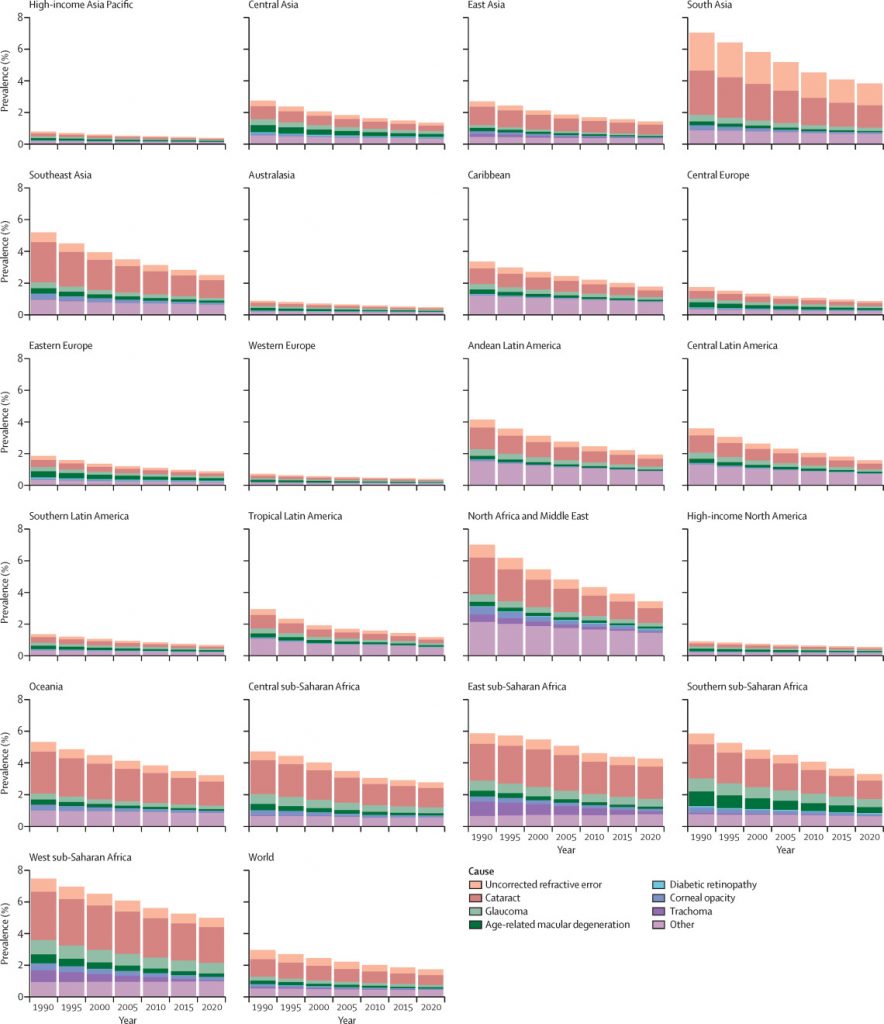Cataracts and refractive defects are still the main causes of blindness and low vision.
A retrospective study published in the Lancet in December 2017 by the Vision Loss Expert Group of the Global Burden of Disease Study examined the causes of blindness on a global scale over the period 1980-2014.
In 2015, cataract is still the leading cause of blindness in people of all ages worldwide.
The study's conclusions are based on a systematic review and meta-analysis of data from 288 studies (both published and unpublished), carried out in 98 countries and aimed at identifying the causes of blindness and low vision.
In 2015, the total number of blind people in the world was 36 million. Uncorrected refractive errors were responsible for blindness in 7.4 million individuals, while glaucoma was responsible for 2.9 million cases.

Taking the 'age' parameter into account, cataract was the leading cause of blindness in the over-50s, followed by uncorrected refractive errors and glaucoma.
Even for moderate to severe low vision, which affects 216.6 million people, the causes are, in order, uncorrected refractive errors (116.3 million), cataracts (52.6 million), age-related macular degeneration (8.4 million), glaucoma (4 million) and diabetic retinopathy (2.6 million).
According to the authors, the trend will continue over time and projections up to 2020 put the total number of blind people at 38.5 million, and cataracts could become the cause of blindness in approximately 13.4 million individuals.
We are therefore faced with a picture in which much can still be done to combat the "avoidable blindness': Cataract blindness is reversible through eye surgery and refractive errors can be corrected, in the vast majority of cases, with the use of appropriate spectacles.
The importance of structured action to prevent all cases of avoidable blindness was once again emphasised in the World Health Organisation's latest action plan (see WHO and eye health).
Bibliography
Flaxman SR, Bourne RRA, Resnikoff S, et al. Global causes of blindness and distance vision impairment 1990-2020: a systematic review and meta-analysis. Lancet Glob Health. 2017 Dec;5(12):e1221-e1234.
Dr. Carmelo Chines
Direttore responsabile
